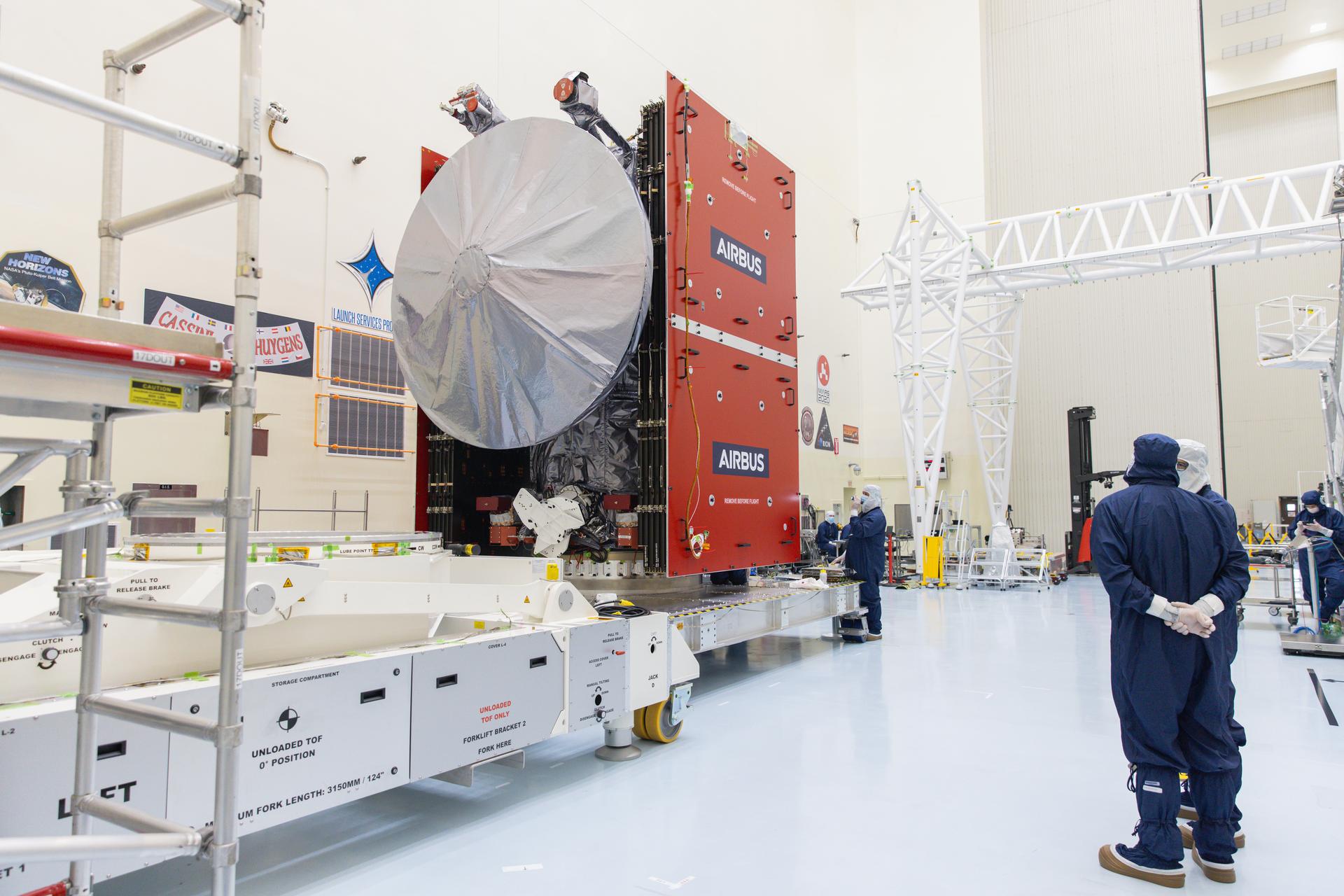Europa Clipper: Fueling Complete
NASA technicians completed loading propellants in the agency’s Europa Clipper spacecraft on Sunday.
 This image shows technicians working to complete operations prior to propellant load for NASA’s Europa Clipper spacecraft inside the Payload Hazardous Servicing Facility at the agency’s Kennedy Space Center in Florida on Tuesday, Sept. 11, 2024. Photo credit: NASA/Kim Shiflett
This image shows technicians working to complete operations prior to propellant load for NASA’s Europa Clipper spacecraft inside the Payload Hazardous Servicing Facility at the agency’s Kennedy Space Center in Florida on Tuesday, Sept. 11, 2024. Photo credit: NASA/Kim Shiflett
Housed in the largest spacecraft NASA has ever built for a planetary mission, Europa Clipper’s propulsion module is an aluminum cylinder 10 feet (3 meters) long and 5 feet (1.5 meters) wide, and it holds the spacecraft’s array of 24 engines and 6067.6 pounds (2,752.2 kilograms) of propellant in two propulsion tanks, as well as the spacecraft’s helium pressurant tanks. The fuel and oxidizer held by the tanks will flow to the 24 engines, creating a controlled chemical reaction to produce thrust in space during its journey to determine whether there are places below the surface of Jupiter’s icy moon, Europa, that could support life.
After launch, the spacecraft plans to fly by Mars in February 2025, then back by Earth in December 2026, using the gravity of each planet to increase its momentum. With help of these “gravity assists,” Europa Clipper will achieve the velocity needed to reach Jupiter in April 2030.
NASA is targeting launch on Thursday, Oct. 10, aboard a Space X Falcon Heavy rocket from NASA Kennedy’s historic Launch Complex 39A.











